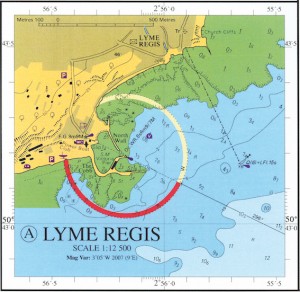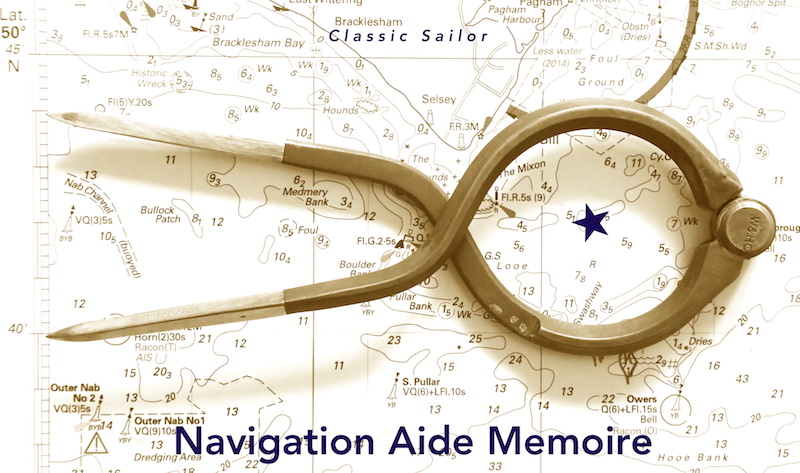Navigation Basics
Many harbours have entrances which are difficult to find at night and leading lights are used as a way of helping sailors to find a clear channel into port. Leading lights, like their corresponding daymarks, are lights that are set up to form a transit, along which you sail, in order to stay in clear water when entering port. Some, like the entrance to St Malo for instance, can be seen for 15 or 20nM away and so you should still do a course to steer (in clear water) to match the notorious cross tides in the area.
The lights’ characteristics are marked next to their position on the chart – thus on the chart below we can see that the rear light at Lyme is a Fixed Green, sited 8metres above Mean High Water Springs with a range of 9 nautical miles. The one in front is occulting (more light than dark) with a white (nine mile range) and red (seven mile range) sector in an eight second sequence.
When looking for leading lights consult the passage-making notes in almanacs and pilots as well as looking on the chart for ldg lts, with a corresponding bearing, colour, height and range. Remember the outer light will be lower and that if it drifts to the left of the rear (higher) light then you should alter course to port to bring them back in line, and vice versa if it drifts to the right. Check tidal streams to be sure that you can stem a cross tide when entering a port.
Leading lights are also position lines, in degrees true, so can also be used to check the accuracy of your ship’s compass. Sailing up and down the transit will give you deviation (after adding or subtracting the local variation) on two bearings as you sail into port and again as you sail out, while sailing across, though far less accurate, can also be used to see how much deviation is affecting your course though you only have a second to check this unless you can remain stationary on the line. If your compass has a lot of deviation then you’ll need to calculate that as you navigate and also consider getting the compass swung by an adjuster.

Here on a UKHO chartlet the leading lights for Lyme Regis are on a bearing of 296° T. The light in front is 2m lower than the one behind, so it is easy to keep them in line and see both lights. If the one in front starts drifting to port then you steer to port to get it back on a bead with the one behind (and vice versa if it goes to starboard). In this case the sector light also helps to keep you on course – basically anywhere in the red zone on your approach is dangerous, so keep in the white light…
Read more great stories from Classic Sailor: OUR STORIES


